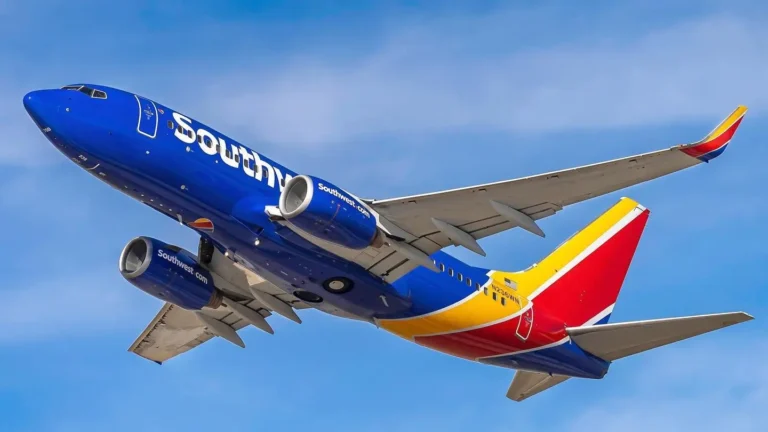DALLAS- Southwest Airlines (WN) will implement new procedures starting December 4 to enhance cabin crew safety during landings.
Flight attendants will now secure the cabin and be seated earlier, beginning preparations when the aircraft descends to 18,000 feet instead of 10,000 feet.

Southwest to Stop Serving Earlier
According to an internal memo seen by Viewfromthewing, this change reflects the airline’s commitment to minimizing flight attendant injuries. The decision follows extensive research and collaboration between Inflight Safety, the TWU 556 Health and Safety Committee, and company leadership, including insights shared in a recent Leader Update by Steve Murtoff and Lee Kinnebrew, VP of Flight Operations.
Key procedural updates include:
- Pilots will announce the start of the descent phase with a public address (PA) at the top of the descent.
- At 18,000 feet, pilots will trigger a high-low chime to signal the beginning of sterile flight deck procedures. This cue directs flight attendants to secure the cabin for landing and take their jump seats.
Years of analysis, including feedback from flight attendants and data from the Flight Data Analysis Program (FDAP), confirmed that earlier seating could reduce injuries by at least 20%. The adjustment aligns with the airline’s Safety Management System (SMS) and company safety goals.
Southwest Airlines will monitor the effectiveness of these changes and share periodic updates. If the intended safety improvements are not achieved, the airline commits to exploring further solutions.

To Reduce Inflight Injuries
The “please prepare for landing” announcement will now occur 8,000 feet earlier, during descent at 18,000 feet, instead of the previous 10,000 feet threshold.
This change means passengers will experience earlier adjustments to in-flight routines, including:
- Cabin service concluding earlier.
- Beverage collection starting sooner.
- Seats need to be in their upright and locked positions earlier.
- Carry-on bags and personal items requiring earlier stowage.
Southwest projects a 20% reduction in flight attendant injuries with this adjustment, based on extensive data analysis and safety feedback. However, this projection reflects improvements on a relatively small baseline and may not address higher-risk safety concerns like passenger aggression or unexpected turbulence.
Other airlines, like United, have also required earlier laptop stowage, reflecting a broader trend in operational adjustments to prioritize safety without additional costs.
Unlike such changes, addressing gate staffing levels—such as retaining at least two agents to screen passengers for issues like intoxication—may require more investment but could enhance overall safety.
For passengers on Southwest, the impact on productivity may be less pronounced given the airline’s slower in-flight Wi-Fi speeds, which significantly trail industry leaders. Only carriers like Frontier and Allegiant, which lack Wi-Fi entirely, rank lower in connectivity.
Stay tuned with us. Further, follow us on social media for the latest updates.
Join us on Telegram Group for the Latest Aviation Updates. Subsequently, follow us on Google News

